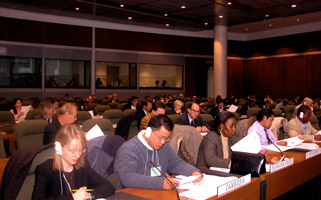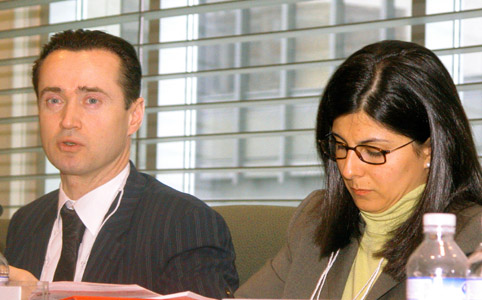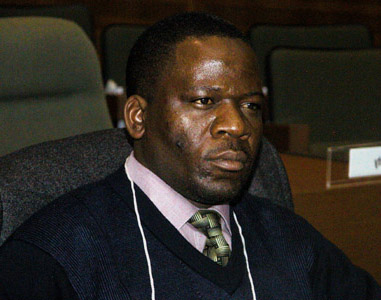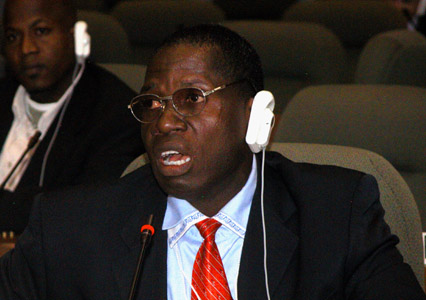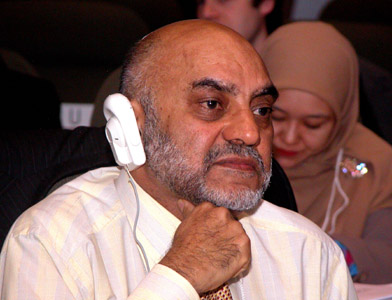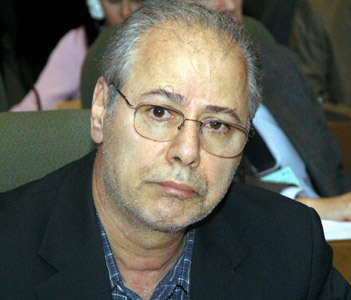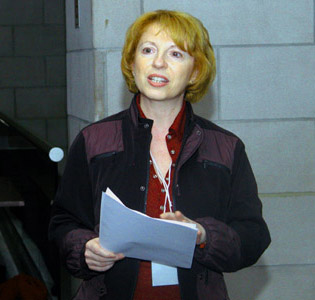|
On Tuesday, 21 February, the second meeting of the Ad Hoc Open-ended Working Group on liability and redress in the context of the Cartagena Protocol on Biosafety discussed options for elements of rules and procedures referred to in Biosafety Protocol Article 27, including the definition and valuation of damage, and causation. The meeting was adjourned at 4 pm to give regional groups time to coordinate, and the Working Group will continue its discussions on Wednesday.
Above photos L-R: View of the
plenary; Co-Chairs René Lefeber (The Netherlands)
and Jimena
Nieto (Colombia).
PLENARY: OPTIONAL COMPONENTS OF THE DEFINITION OF DAMAGE
|
|
||||
|
|
|
Co-Chair
Lefeber concluded that traditional damage will
be retained as an option but that its relationship to
other options requires further consideration. |
POSSIBLE APPROACHES TO VALUATION OF DAMAGE TO CONSERVATION OF BIOLOGICAL DIVERSITY:
On Tuesday morning, participants addressed possible approaches to valuation of damage to conservation of biodiversity, focusing on two options identified in the co-chairs’ synthesis: Cost of reasonable measures taken or to be taken to restore the damaged components of biodiversity; and monetary compensation.
Above photo: Philip Bereano (Washington Biotechnology Action Council) |
Norway
supported the EU's submission on the valuation of
damage relating to “primary
restoration” and “complementary restoration."
Above photo: Beate Bergluno Ekeberg (Norway) |
Above photo: Johansen Voker (Liberia) |
Above photos L-R: Doris Ponzoni and Michael Leader (Global Industry Coalition) welcomed delegates to the reception as well as presented a paper on defining damage.
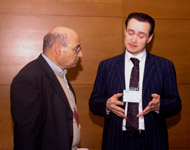 |
 |
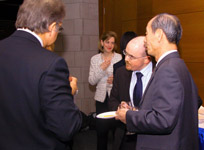 |
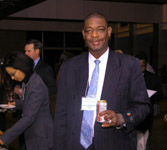 |
 |
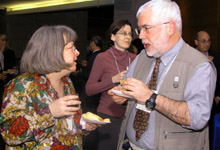 |
 |
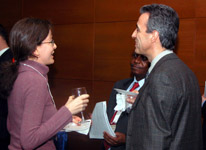 |
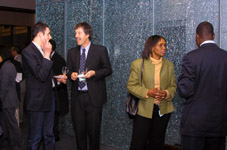 |
 |
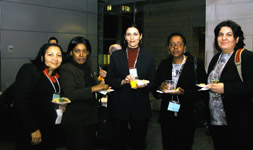 |
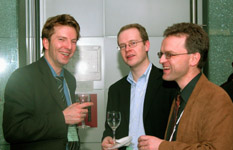 |
Links to ENB/YMB
coverage
![]() ENB
coverage of WGLR-1
ENB
coverage of WGLR-1
![]() ENB
coverage of COP-7
ENB
coverage of COP-7
![]() ENB
coverage of ABS-4
ENB
coverage of ABS-4
![]() ENB
coverage of WG-4 on Article 8(j) and related provisions of the CBD
ENB
coverage of WG-4 on Article 8(j) and related provisions of the CBD
![]() ENB
coverage of the Second Meeting of the CGRFA acting as the Interim Commitee for the International Treaty on Plant Genetic Resources for
Food and Agriculture
ENB
coverage of the Second Meeting of the CGRFA acting as the Interim Commitee for the International Treaty on Plant Genetic Resources for
Food and Agriculture
![]() IISD
Linkages Biodiversity and Wildlife Recent Meetings
IISD
Linkages Biodiversity and Wildlife Recent Meetings
| |
|
| Back to
Linkages home | Visit
IISDnet | Send e-mail to
ENB | |



